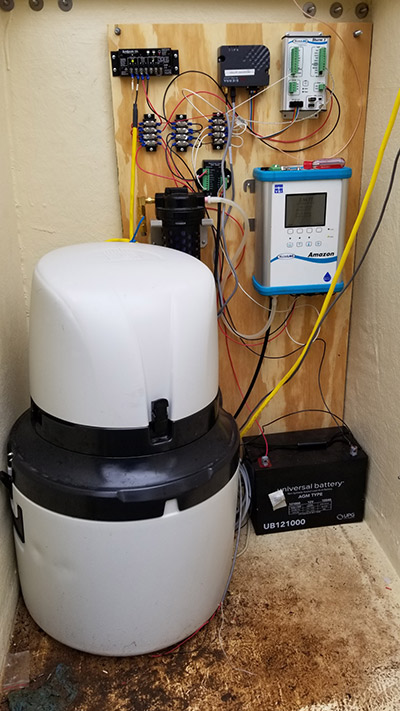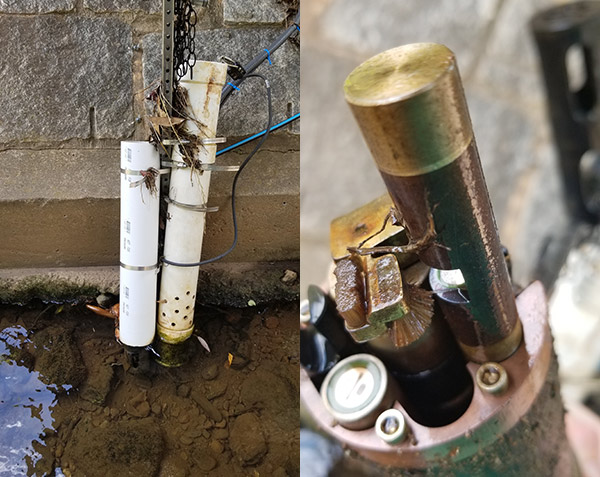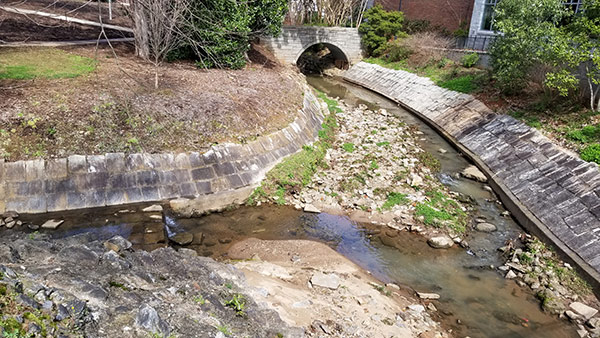Determining Stream Toxins with Water Quality and Level Data
When researcher Wesley Gerrin gained access to a sediment toxicity lab in the Experimental Forest on the University of Georgia campus, he wanted to investigate an on-campus lake for any potential contamination issues.
After his research was completed, he was fortunate enough to have some extra grant funding for the addition of a few samples from any location on campus, so he chose one of the most exciting sites on the University premises: Tanyard Branch. As Wesley said, “We ran the tests, and everything looked good, except for Tanyard Branch.”
Tanyard Branch has been one of the most heavily monitored creeks in the Athens-Clarke County area for the last couple of decades due to contamination - it has a long history of abuse beginning in the 1700s.
Native Americans long used the area as hunting and fishing grounds, but it was eventually seized by colonists. The people who then settled into the area opened botanical gardens - this introduced non-native and invasive species - and opened many tanneries that used hazardous chemicals along the creek banks to process hides for a variety of uses.
As the need for tanneries faded, the area became home to impoverished residents who used the creek for their personal hygiene and for their livestock. As Athens expanded, the creek was channelized - about 50% of it ran through pipes at one point in time. All of these activities ultimately have caused Tanyard Branch to become extremely impaired.
According to Wesley, he and fellow researcher Dr. Jay Shelton realized they needed to learn more about what was going on at the site. Wesley said, “Since then, we’ve been trying to investigate what could be some of the sources of that contamination.”
In June 2019,  a continuous monitoring station equipped with an Amazon water level monitor and EXO multiparameter water quality sonde was installed along Tanyard Branch, just downstream of where two channel segments merge together. In addition, they also have a Storm 3 data logger and ProSample automated sampler.
a continuous monitoring station equipped with an Amazon water level monitor and EXO multiparameter water quality sonde was installed along Tanyard Branch, just downstream of where two channel segments merge together. In addition, they also have a Storm 3 data logger and ProSample automated sampler.
“It just turned into this thing that everyone could have access to and see what was going on in the stream,” says Wesley, referring to the data being telemetered to YSI’s data hosting platform, HydroSphere.
“I was just investigating some of that data and noticed these weird little spikes in conductivity, water level, and temperature.”
These frequent spikes in data are real and happening on a very consistent basis – every couple of hours. The first parameter the team looked at was water level, with readings coming from the YSI Amazon pressure transducer. This high accuracy bubbler showed minuscule changes in data, sometimes to the tune of only 0.01-0.02 feet. However, in a watershed that is a mere 2.2 sq km, any change in water level can be considered significant.
Wesley’s rugged, multiparameter EXO Sonde in Tanyard Branch was equipped with water temperature, conductance, pH, dissolved oxygen, turbidity, chlorophyll, and phycocyanin sensors. Warmer water was noted to be input in the stream throughout the time period at the same time that the water level was changing – even during the extremely hot summer months – and could even be seen during storm events when stream discharge was tenfold the amount at baseflow.
Specific conductance always rose during these discharge events, too, which is extremely important as far as a determination of source. According to the team, a normal Georgia Piedmont region stream has conductance in the range of 40-80 uS/cm. Wesley noted, “When it gets over about 100 μS/cm, we start to say that something is going on here. But this stream typically measures around 180 uS/cm. Then, when it spikes, it will go up about 10 uS/cm and then come back down. So it is concerning to us as to where that might be coming from – the baseline is high and then it spikes even higher.”

EXO Sonde with water temperature, conductance, pH, DO, turbidity, chlorophyll, and phycocyanin sensors (on right) along with the sonde installation mounting (on left).
Turbidity data is also important to this site and team when it comes to monitoring infrastructure for deterioration. “What we didn’t realize,” says Dr. Shelton, “was how intimately intertwined water infrastructure is with other types of infrastructure.
So, Athens-Clarke County expressed to us that they’re concerned about the corrosive and the erosive impacts of stormwater on their other infrastructure, such as culverts, pipes, and other conduits that go under roads and bridges.” Turbid waters carry many pollutants that can deteriorate concrete and metal structures, many of which Tanyard Branch flows through.
Tanyard Branch being channelized for the majority of the reach makes it “basically a giant stormwater pipe,” per Wesley. “To my knowledge, the watershed has no retention of stormwater whatsoever. It just runs off the parking lots directly into the stream.”
He noted that they visited Tanyard Branch during a storm event and “it was probably five or six feet up about 15 minutes after it started storming.” With that increase in stream velocity and sediment, it makes sense that there would be infrastructure concerns.
The Amazon and EXO turbidity sensor provide a real-time picture of exactly what is flowing through the watershed, allowing for analysis of effects concerning the community. “Maybe eventually, we can start to quantify some of the things we are talking about and determine just how bad that is for a concrete-type infrastructure.”

Tanyard Branch is channelized for the majority of the reach resulting in similarity to a stormwater pipe.
As Dr. Shelton states, Tanyard Branch has multiple stressors that make it a pretty complicated site. In the future, the team plans to expand their monitoring and perform stream walks to determine the source of the toxins and the effects of the water on infrastructure.
“And, you know, we don’t have a lot of sensors, but just a few sensors sometimes can point you to the smoking gun.”
